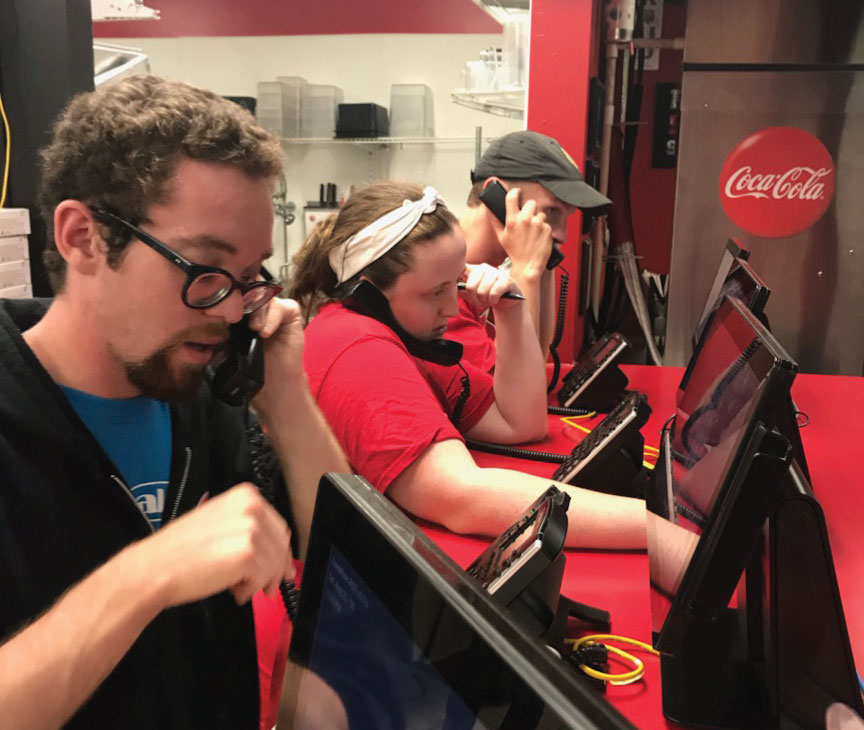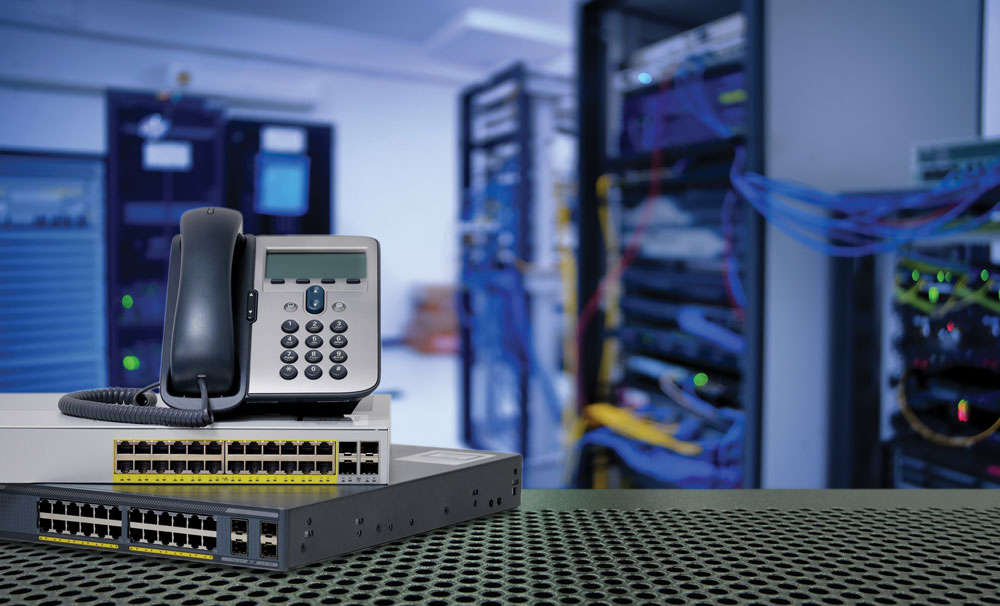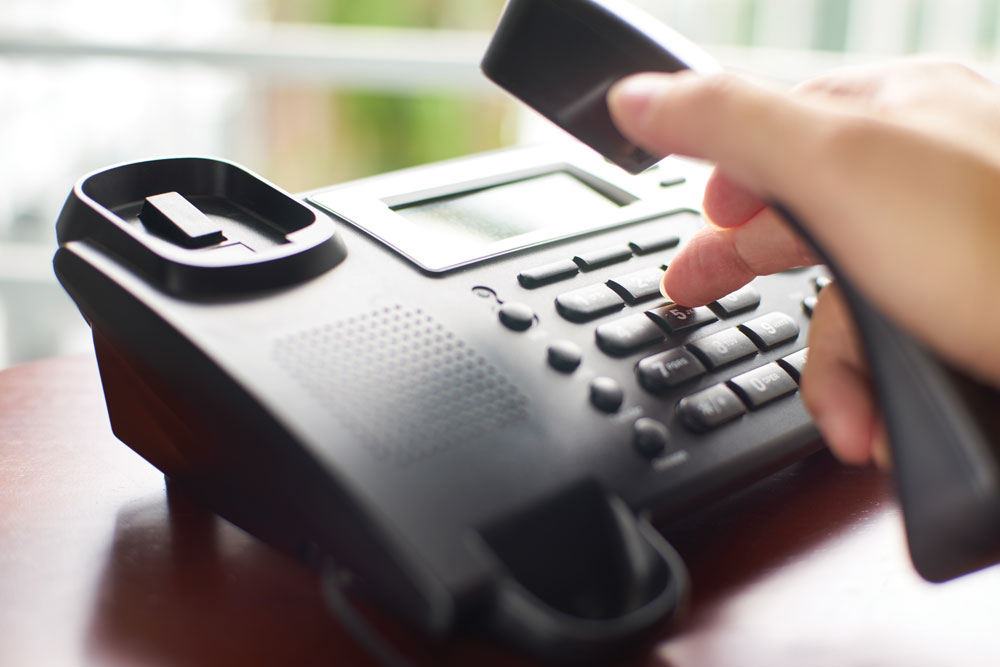Though many may still cling to them, old-fashioned landlines have been waning in popularity for years, and the switch is not surprising.
The features of today’s newfangled cloud-based solutions are attractive to many operators, especially those with multiple locations: the ability to take almost unlimited calls during high-volume periods, sans busy signals; to reroute, record, store or play back conversations; to create a centralized call center for labor efficiency; or to increase sales stats via on-hold messages with upsell suggestions.
Just as important, they allow operators to collect and analyze critical stats, helping whip stores into shape. “Until about 18 months ago, all of our locations had typical landlines,” says David Schylling, VP of franchise operations for D.P. Dough, headquartered in Columbus, Ohio. “There weren’t many bells and whistles or the features that are available when you connect your phones to the internet. Now, we don’t just record calls—we collect a lot of data that’s very valuable to us.”
 |
|
New phone systems at D.P. Dough help owners collect and analyze important data. |
Challenges and Improvements
| Find Your Provider |
Obviously, a phone system is only as good as its features, but how do you find the right provider? John P. Scully, president of PizzaCloud in Granville, Ohio, advises asking the following questions:
|
VoIP (voice over internet protocol) solutions were initially introduced years ago, using Internet instead of traditional phone lines to connect users at a fraction of the cost, but these early solutions were far from perfect. “The internet wasn’t built for real-time communications, so people had a negative experience,” notes Ray Pasquale, CEO/founder of Unified Office in Nashua, New Hampshire. “Voices would get warbled, and if your internet goes down, so does your phone service. The market was sullied when people saw these new systems didn’t work as reliably as their old phone systems.”
However, landlines can be much more expensive than VoIP systems—Schylling notes that before switching services, he was paying $500 per month for phone, internet and TV; now, he pays less than half of that. “We knew an operator paying $450 per month for six lines, plus the cost of internet, but now they have six phones, with 10 lines each, at $155 per month,” adds John P. Scully, president of PizzaCloud in Granville, Ohio. “Of course, you do save compared to a traditional phone bill, but that’s really the smallest part of the equation. The real reason to switch is the increase in efficiency and revenue. We’ve seen a $350 to $1,000 increase per month from using the features available now, so the ROI is huge.”
Trave Harmon, CEO of Triton Computer Corporation, with four locations in the Northeast, agrees that traditional landlines remain limited for operators who want to grow or who take a lot of calls—and no tracking is available. Later systems offered basic recording and multiple extensions, but not much else. But cloud-based systems boast various features, like the ability to take calls when phone lines are down, to forward calls to another line, to review call logs over multiple locations to see how each is performing, to play back calls or to create a centralized dispatch. “Ultimately, the right system can reduce labor costs and help the bottom line,” Harmon asserts. “You can now get internet, phone and a firewall for credit card processing in one low-cost package—under $200 per month—with minimal up-front investment.”
 |
|
D.P. Dough recently made the switch from traditional landlines to a cloud-based phone system. |
Futuristic Features
Though the basic benefits of landlines and even first-generation VoIP haven’t changed much over the years, today’s system providers are looking to innovate, giving operators more features and access to business-boosting data than ever before. After all, Pasquale points out that even giants like Domino’s, while logging robust online ordering sales, still receive half of their revenue from nondigital (i.e., phone calls), and even customers who do order online tend to call directly in the case of a question or concern.
But today’s everything-on-demand consumers don’t have much tolerance for busy signals or endless rings, and unprepared operators pay the price in squandered sales. “Now you can avoid busy signals with the ability to answer unlimited calls—that is, limited only by your bandwith, which today is huge—and create marketing messages (generated by owners or using ‘voice talent’ from the provider) for customers to hear while they wait,” Pasquale says. “Businesses today must cope with our ‘real-time’ culture. When customers wait on hold too long or the call drops, they’ll move on to the next pizzeria.”
Pasquale points to other features available: For example, a call from a VIP/repeat customer can be flagged as it comes in, or staff can see on a screen when someone has been on hold for longer than 15 seconds. Operators can get real-time performance reports to see how the business is handling incoming calls—a feature that Pasquale has seen improve sales for a pizzeria by 35% in a single week. There are even futuristic features being introduced, such as “sentiment analysis,” an AI-type software that “listens” to recorded calls and checks for emotions, like happiness or yelling, or software that allows operators to type in keywords to ensure employees are upselling or representing the brand in the best light. Meanwhile, with call recording features, operators can monitor the business even while on vacation, logging in to check store performance or listening in on live calls (including the ability to break in for coaching if necessary, with only the employee able to hear). Or, especially important for multiunit operators, a system can be flagged when no calls are recorded in a length of time, such as 15 minutes. “In these cases, obviously the phone system isn’t operating correctly—or at all—so the operator can be notified by text, phone, email, or all three,” Pasquale says. “With this feature, an operator with locations in several states realized employees were closing one store an hour early!”

In Case of Emergency
Operators know Murphy’s Law all too well: If something can go wrong, it will. But luckily, today’s phone systems can offer solutions for those special circumstances that can turn a business belly-up. Scully, for example, points to the importance of having backup routers with a cellular data modem, so that if phones or internet go down, operators can continue business as usual. “This protects not only your phones, but also credit card processing, POS system, WiFi, security cameras—anything connected to the internet,” Scully notes. “Even if the internet goes down, you don’t drop a single call.”
Another scenario that may occur: If an operator has multiple locations fairly close to each other, and one is placed out of commission due to a power failure, the operator can automatically redirect calls to that nearby backup location. “You can even initiate a prerecorded message to the caller saying he is being rerouted, then have an announcement to that second store’s employees that this is a rerouted call,” Scully says. “You can set this up in minutes to prevent losses.” Meanwhile, Pasquale points to a feature that helps endangered drivers: a “safety line,” with a specially reserved number that drivers can call if they feel threatened.
And, of course, the ability to record and review calls can come in handy to prevent crises large and small—and put out minor operational fires before they spread. “If there’s an incident, like an incorrect order or a crime—or if we just want to improve customer service or replay calls for training purposes—call recording is a must,” Schylling asserts. “We can also see so much data to improve: How many rings does it take for an answer? How long will customers wait before they abandon a call? Are we answering quickly enough on busy nights? With all of the features available today, there are so many possibilities.”
Tracy Morin is PMQ’s senior copy editor.















